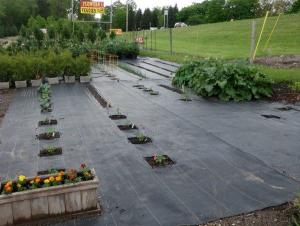Welding HDPE Geomembranes: A Personal Journey into the Art of Waterproofing
My profession as a civil engineer dedicated to guarding the natural environment has always drawn me towards geosynthetics, an amazing world. The versatility and resilience of high-density polyethylene (HDPE) geomembranes are striking in comparison to other materials I have worked with. This paper is a personal narrative of HDPE geomembrane welding, which is essential for maintaining the integrity and longevity of waterproofing projects.
The Wonders of HDPE Geomembranes
High-density polyethylene (HDPE) is a plastic that is strong, tough and resistant to chemicals, UV radiation and temperature extremes. When made into a geomembrane it becomes one of the main constituents in various construction activities such as landfill liners, canal linings or reservoirs. It’s impermeability makes it an ideal choice for preventing seepage and protecting environment from pollution.
Understanding the Importance of Welding
Welding involves more than bringing together two pieces of HDPE geomembrane; rather it is about making one all-inclusive seal that does not allow water to pass through. An incorrect weld could compromise everything leading to expensive repairs and possible threats to the surroundings. That’s why professionals take this process very seriously in their field.
The Art of HDPE Geomembrane Welding
Process of welding HDPE geomembranes falls under both science and art umbrella involving heat, pressure, and accuracy. Extrusion Welding and Radio frequency welding are two popular methods used for joining them. During extrusion welding sheets are glued together using hot melt adhesives while radio frequency welding applies electromagnetic energy that heats up & fuses these materials.
My Experience with Extrusion Welding
I can still recall when I first saw someone performing extrusion welding. As he moved his extruder along the seam you could smell plastic being melted. It was fascinating to watch two sheets become one, and the bond created between them was stronger than the material they were made from. The welder had to be very meticulous about the temperature and speed because if they did not get it right, there could be problems such as undercuts or over-melting.
The Precision of Radio Frequency Welding
On the other hand, radio frequency welding is a more automated process that requires less dexterity but higher technical knowledge. This kind of welding has remarkable consistency and is especially useful in fast track projects where rate and uniformity matter most.
Challenges and Solutions in Welding
Every welding project poses its own unique set of challenges. Weather factors, flaws in materials, or human error may influence weld quality. Over time I have learned to adapt and beat these challenges. Some of these challenges include using the correct tools for a given task, ensuring that the geomembrane is clean and dry before welding, as well as training welders to identify defects and rectify them straightaway.
Quality Control: The Guardian of Excellence
In any successful welding project quality control acts as a pivotal point. Frequent checks, non-destructive testing (NDT), compliance with industry norms are essential steps. My firsthand experience has shown me how diligent quality control procedures can help catch problems early on before they get bigger thereby saving time and resources ultimately.
The Future of HDPE Geomembrane Welding
The field of HDPE geomembrane welding is also developed with the advancing technology. New techniques and manufacturing equipment have been introduced, which make the process more efficient and effective. I look forward to seeing what will happen next in this industry.
Conclusion: A Passion for Perfection
To sum up, HDPE geomembrane welding goes beyond simply being a technical procedure; it is rather an art that requires excellence, skillfulness and accuracy. When I think back on my experiences, I feel both proud and amazed at how much these projects contribute to our environment as well as communities. Welding HDPE geomembranes does not just mean constructing a barrier; it involves establishing protection and sustainability heritage.







